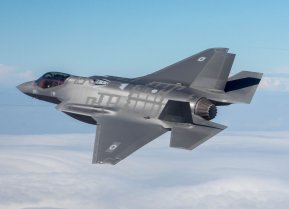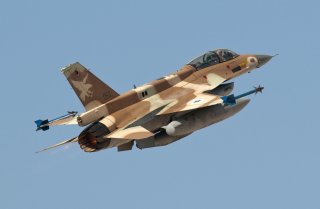Could Hezbollah Destroy Israel?
Due to Hezbollah’s arsenal and the willingness of other Iranian-linked groups in the region to join a war effort if one arises, a victory for the IDF in a potential northern war would result in many deaths.
As Israel enters its 28th day of warfare against Hamas, analysts are growing more concerned that other regional actors could expand and, therefore, prolong the crisis. Skirmishes between Israel’s Defense Forces and the Lebanon-based group Hezbollah have increased since Hamas waged its brutal surprise attack against the Jewish state. Since October 7, the Iranian-backed terror group has lost several dozen militants to Israeli strikes along the shared border.
For the first time on Sunday, Hezbollah debuted its surface-to-air missile capability for the first time when it claimed to have shot down an Israeli drone. Obviously, the group’s weapons arsenal is only growing and advancing.
Since the last Lebanese-Israeli war in 2006, the terror organization has had ample time to expand its capabilities and secure more fighting essentials from Tehran. Now that tensions between Hezbollah and Israel are mounting, an all-out war is considered a real possibility.
Introducing Hezbollah
Like many of Iran’s regional proxy groups, Hezbollah was a product of exploitation. In the middle of Lebanon’s 1975-1990 civil war, Iran’s Revolutionary Guards Corp founded the organization to better export the Islamic Republic’s revolutionary principles abroad. Domestic chaos during this period resulted from the emergence of terror groups, international failures, and widespread sectarian violence. Tehran took advantage of the power vacuum created from this instability. Under the guise of fighting against the “Zionist” and “imperialist” occupation of Lebanon at the time, Hezbollah was able to recruit Lebanese Shi’ite Muslims, who received scores of funding, training and assistance from the IRGC.
Since Hezbollah’s founding, the IRGC has been able to deeply entrench itself into all aspects of Lebanon’s polity. From the shadow economies it controls to the social services it provides, the terror-designated group is deeply embedded in the country. According to the Foundation for the Defense of Democracies, Hezbollah seizes between $500-$1 billion annually from Lebanon’s economy.
With this stolen wealth coupled with support from the Islamic Republic, Hezbollah has been able to amass a concerning weapons arsenal over the years. Even back in 2010, then-U.S. defense Secretary was quoted asserting that “We are now at the point where Hezbollah has far more rockets and missiles than most governments in the world.” While the terror group had only fought Israel from within its borders at this time, Hezbollah would later deploy to Syria to support the rule of authoritarian leader Bashar al-Assad. As an Iranian proxy group, Hezbollah has the same objective as Hamas- eliminate the world’s sole Jewish state. In fact, on October 7, Hezbollah said it was in “direct contact with the leadership of the Palestinian resistance.”
Hezbollah’s weapons arsenal is deadly
Considering the depth of Hezbollah’s weapons arsenal, a full-scale war along Lebanon’s shared border with Israel would be deadly for both sides. The terror group possesses a wide variety of weapons, including stockpiles of rockets and guided missiles which can travel distances of over 300 kilometers while carrying 500-kilogrm payloads. Additionally, Hezbollah’s air defense systems, combat drones and anti-ship cruise missiles could enable the group to mount a coastal blockade of the Jewish state down the line. As detailed in a Politico piece, “The rocket attacks against Israel by Hamas since October 7 would be a light summer shower compared to the deluge Hezbollah could bring down on towns and cities across Israel.”
Analysts predict Hezbollah has roughly 150,000 rockets and missiles, making the terror group the most heavily armed non-state actor across the planet. The advancement of the group’s arsenal over the years mirrors the evolution of other Iranian-backed groups in the region. The Yemen-based Houthi rebels have reportedly worked alongside its Lebanese affiliates to strengthen rocket development and launch divisions. Existing Shi’ite militias in Iraq and Syria also indicate that the spread of technology and more lethal weapons contribute to Hezbollah’s evolution.
Due to Hezbollah’s arsenal and the willingness of other Iranian-linked groups in the region to join a war effort if one arises, a victory for the IDF in a potential northern war would result in many deaths.
Maya Carlin is an analyst with the Center for Security Policy and a former Anna Sobol Levy Fellow at IDC Herzliya in Israel. She has by-lines in many publications, including The National Interest, Jerusalem Post, and Times of Israel. You can follow her on Twitter: @MayaCarlin.


